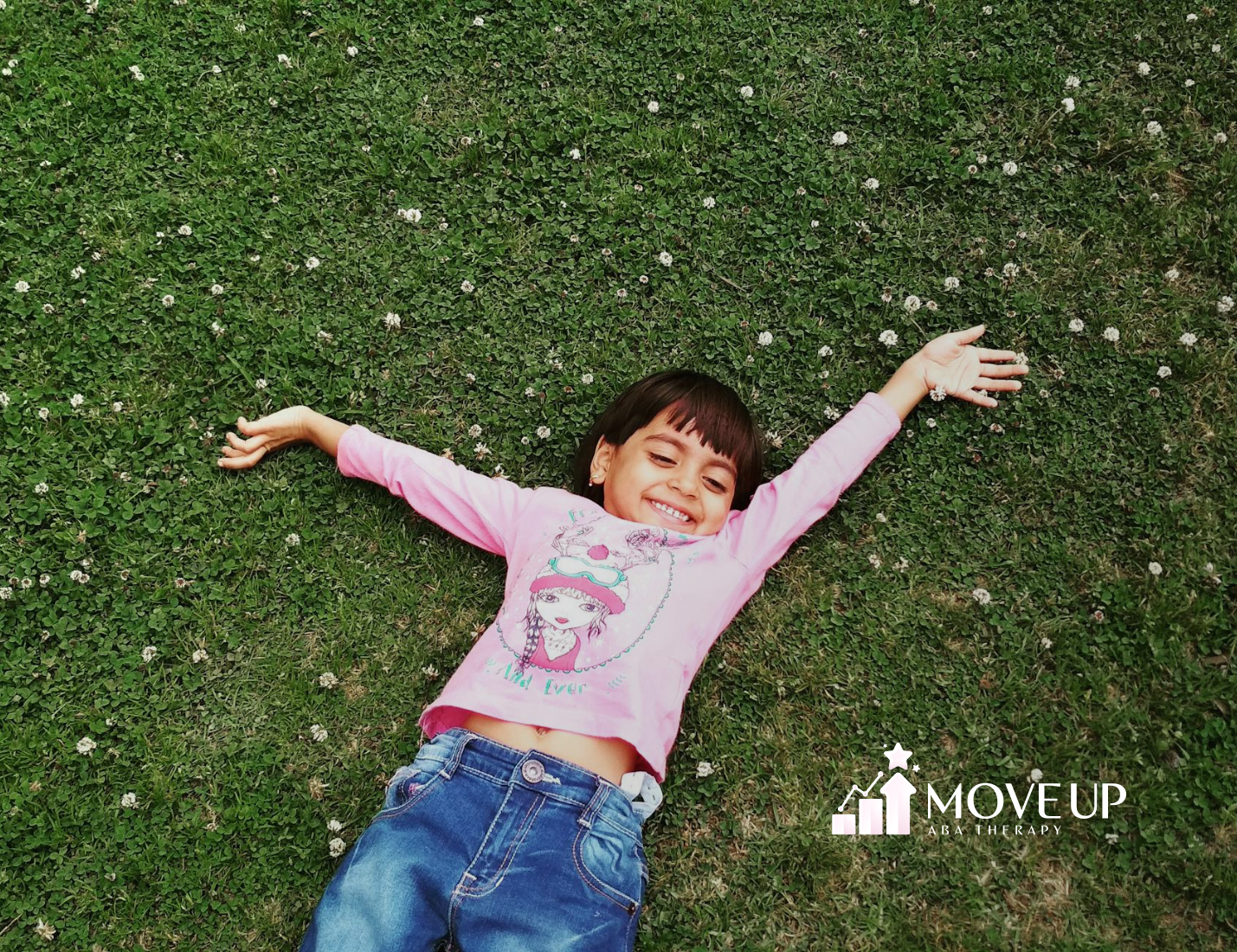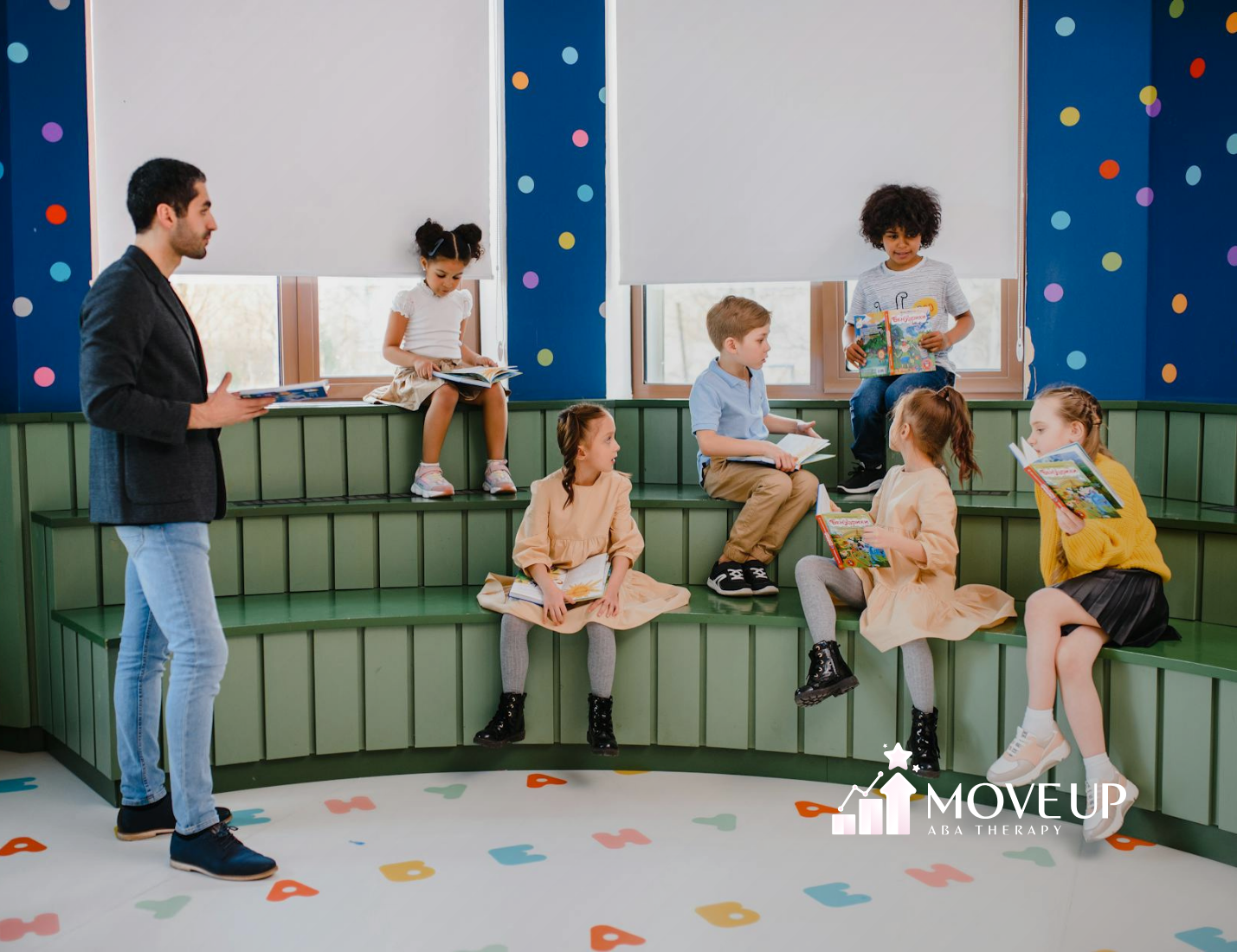Applied Behavior Analysis, or ABA therapy, is a method based on science. It aims to improve behavior and development. The key part of ABA is behavior analysis, which uses proven strategies to help with positive growth. Naturalistic teaching in ABA therapy takes this idea further. It includes learning opportunities in everyday routines and settings. The focus is on communication skills and social interaction. This approach has become very important in the field of ABA, especially for children facing challenges from autism spectrum disorder (ASD).
Introduction to Naturalistic Teaching in ABA Therapy
Naturalistic teaching in ABA therapy is a new way to reach developmental goals. Unlike older methods that stick to structured sessions, this approach uses the child’s everyday environment, like their home, school, or grocery store. Therapists and teachers create situations where daily routines become chances to build skills, focusing on social interaction and language use in real-life settings.
This method really connects with the child’s likes and interests, making learning fun and important. For example, if a child loves puzzles, a therapist might teach things like taking turns or asking for help while they play. This helps to link motivation with learning goals, leading to more steady progress. By mixing therapy into daily life, naturalistic teaching fosters skills that children can use outside of sessions. This helps them succeed in places they know well and supports their overall growth and development.
Definition and Core Principles of Naturalistic Teaching
Naturalistic teaching methods focus on using real-life settings to teach important skills. These techniques usually involve play that is led by the child and connects to their personal interests. This helps keep children motivated and engaged. For example, pivotal response training picks behaviors that match a child’s main interests and works on their motivation and response.
Another key method is incidental teaching. In this approach, educators and therapists take advantage of spontaneous moments. For instance, if a child shows interest in a toy, an adult encourages them to talk about it to improve their language skills. This keeps the interactions relevant and meaningful.
The main ideas of naturalistic teaching focus on personal teaching techniques that fit into daily routines. Whether the aim is communication or social behaviors, learning happens naturally. It gives children freedom in activities while meeting important goals. This flexible method is appealing for teachers, therapists, and parents.
How Naturalistic Teaching Integrates with ABA Therapy
Naturalistic teaching works well with ABA therapy because it helps kids build skills in real-life situations. Unlike traditional ABA, which mainly happens in clinics with set routines, naturalistic teaching uses these ideas in everyday life. For example, a child might learn how to handle frustration while playing instead of just practicing it in a clinical setting.
This method combines ABA’s focus on proven practices with a more flexible, child-centered approach. A good example of this is incidental teaching, which supports language development through everyday interactions.
Overall, naturalistic teaching builds on ABA therapy’s main ideas by highlighting the importance of applying skills in practical ways. This teamwork makes therapy more fun, easier to access, and more effective, helping children grow in many areas during and after therapy sessions. Therapists usually invite parents and caregivers to join in, ensuring kids get the same support in different environments.
Key Techniques of Naturalistic Teaching
Naturalistic teaching uses different methods. One is called Incidental Teaching, where learning happens through unexpected events. Another is Pivotal Response Training (PRT). It focuses on key behaviors like motivation and social interaction. Natural Environment Teaching (NET) is also important. It teaches skills within daily routines, such as during play or mealtime.
These methods make learning better by focusing on a child’s interests. This helps spark their motivation, which promotes real language growth and social involvement. By allowing children to make choices, therapy can be more engaging, effective, and fun.
Pivotal Response Training (PRT) Explained
Pivotal Response Training (PRT) is a way to help kids learn. It looks at important behaviors that help them grow in learning and social skills. This approach works well with applied behavior analysis (ABA) therapy. It encourages kids to stay involved and motivated by using positive reinforcement. PRT creates chances for kids to speak and interact with others in their daily lives. This helps them use their skills in different situations and develop language. Overall, this strategy does not just focus on good behaviors. It also supports adaptive growth and improves a child’s development in their natural environment.
The Role of Incidental Teaching
Incidental teaching is an active way to help children learn through everyday moments. It uses spontaneous situations during daily activities to encourage good behaviors and language growth. The main goal is to boost motivation by connecting learning to what the child naturally likes. For instance, if a child wants a toy, therapists can take this chance to encourage talking, like asking questions about it. If a child reaches for a ball, the therapist might say, “What is this?” and wait for the answer.
This method mixes a clear plan with room for adjustment. Therapists change their approaches based on how the child responds. They can use pictures, signs, or gestures along with words to help keep the child interested.
By working in real-life situations, incidental teaching makes learning relatable and effective. Parents and teachers often team up to make sure the child gets consistent support at home and in school.
Utilizing the Natural Language Paradigm (NLP)
The natural language paradigm (NLP) focuses on how important communication is in our daily life, especially in therapy sessions. By using language in real-life settings, NLP helps children learn important language and social skills. It encourages therapy to happen during everyday activities like going to the grocery store or playing. This way, children have real learning opportunities. Positive reinforcement is important too. It supports good behaviors and helps children grow. This promotes skill generalization and enhances their communication skills and overall development.
Benefits of Naturalistic Teaching in ABA
Naturalistic teaching has many benefits. It combines developmental goals with real-life situations. This method helps children develop communication skills. They learn useful tools for social interactions and feel motivated because they have more control.
When therapy is part of everyday routines, this child-focused approach helps kids use their skills outside of therapy. Positive reinforcement is very important. It builds confidence and helps children adapt. For kids with developmental disabilities, naturalistic teaching methods provide ongoing therapy. This leads to real results and lasting improvements in different areas of life.
Enhancing Communication and Social Skills
Naturalistic teaching has a big impact on communication and social skills. This helps children do well in social situations. Therapists get kids involved in familiar places, like classrooms or play areas. This way, they encourage kids to interact naturally. For example, during playtime, a child might learn to ask for their favorite toy or invite a friend to play together.
A key part of this is contextual learning. Therapists connect communication goals to real-life needs. Incidental teaching is important too. If a child wants a snack, they need to ask for it or make a gesture. This helps them use language for immediate rewards.
Building social skills happens naturally, focusing on important behaviors like taking turns, sharing, and showing emotions. Positive reinforcement boosts confidence. This helps children practice these skills in different settings. As communication becomes a fun and useful process, kids learn to adapt, which helps them in their daily lives.
Promoting Generalization of Learned Skills
Generalization of learned skills happens when children use the new skills they learn in different places and situations. This is important because it helps skills like communication and making friends become part of everyday life. This helps the child grow in a good way. Using naturalistic teaching methods, like pivotal response training and incidental teaching, can really improve skill generalization. Practicing in different places, such as grocery stores or during playdates, gives real learning opportunities. This helps teach the child how to behave in different situations and builds their confidence in daily lives.
Evidence-Based Outcomes Demonstrating Effectiveness
Many studies show that pivotal response training (PRT) and other naturalistic teaching methods improve social skills and communication in children with autism spectrum disorder. These methods help children apply new skills in different environments, like in their daily routines. Positive reinforcement used during therapy can reduce challenging behaviors and support adaptive growth. Overall, there is strong evidence that naturalistic teaching strategies are effective in creating important behavioral changes.
Implementing Naturalistic Teaching Strategies
A variety of naturalistic teaching strategies can help kids learn skills in different situations. Using incidental teaching and pivotal response training together creates fun and engaging learning opportunities that match a child’s interests and development. By focusing on natural settings, therapists can use daily routines to mix learning with everyday activities. Also, letting children take the lead boosts their confidence and makes them more motivated. This approach helps them apply what they learn in different places.
Creating Effective Learning Environments
To create good learning environments, it is important to understand where children do well. Using pivotal response training (PRT) in everyday situations, like going to the grocery store, offers real learning chances that connect to what the child already knows. This method focuses on building social skills and language development. It does this by providing fun, surprise moments that encourage good behavior. Each environment should fit the unique needs of the child. This way, children can grow, develop skills that apply in different situations, and have easy social interactions, leading to positive outcomes in applied behavior analysis.
Encouraging Child-Led Initiatives
Fostering child-led activities is very important in using naturalistic teaching methods. When children lead learning activities, they feel more motivated. This helps them engage and learn skills in real-life settings. Encouraging children to explore by themselves also helps them develop social skills and communication. As they interact with their peers during these moments, they learn together. This method comes from applied behavior analysis. It not only encourages independence but also helps skills transfer to different environments. This can benefit their overall adaptive growth.
Techniques for Effective Reinforcement
Reinforcement techniques are very important for encouraging the right behaviors in naturalistic teaching. Using positive reinforcement, like praise or small rewards, boosts motivation. It shows that kids are doing well at learning new skills. When reinforcement is customized to fit each child’s likes, it helps them stay involved, especially for those with unique needs, like children on the autism spectrum. Also, using reinforcement during daily routines and activities, such as playtime, helps kids use their skills in different environments. This method helps children see how appropriate behaviors are valuable in their daily lives.
Challenges and Solutions in Naturalistic Teaching
Implementing naturalistic teaching strategies can be tough. Sometimes, children, especially those with autism spectrum disorder, may resist these approaches. To foster engagement and make changes, it’s important to adjust techniques to fit individual needs. Educators also face learning environments that may not support their goals. To help, they should improve natural settings with clear support. Using positive reinforcement and recognizing each learner’s unique situation can help teachers develop good practices. This will promote adaptive growth and skill generalization for all students.
Addressing Common Implementation Challenges
Implementing naturalistic teaching strategies can be tricky. Adapting these techniques for different environments can be tough, particularly when trying to help children with autism spectrum disorder improve their social interactions and communication skills. Behavior analysis practitioners might find it hard to offer consistent learning opportunities when there are distractions or different settings. It’s also important to train everyone involved properly to make sure the interventions are effective and support the desired behavior. Additionally, it’s vital to find and address any resistance to these methods for them to work. This approach can help promote adaptive growth in the learning environment.
Tailoring Strategies to Individual Needs
Individual strategies are important for making naturalistic teaching work better. Understanding each child’s unique needs helps teachers adjust their methods. This way, behavior goals can connect with what kids like and do every day. Using different teaching methods, like pivotal response training and incidental teaching, helps keep kids engaged in various environments. Also, regular assessments refine these strategies, supporting skill generalization and improving social interactions. This focused approach not only helps in learning but also boosts good behavior and communication skills in a way that fits with the child’s daily routines.
Strategies for Overcoming Resistance to Naturalistic Methods
Resistance to naturalistic methods can be improved with active involvement and specific strategies. Talking openly with parents and caregivers helps teamwork and understanding. This creates a friendly environment for change. Sharing success stories shows how these methods work. This can reduce doubts and build trust.
Using naturalistic teaching step by step, like adding it to daily routines or familiar places, lets people see the benefits themselves. Giving ongoing training and resources gives teachers the tools they need. This strengthens their confidence in using these helpful methods.
The Impact of Naturalistic Teaching on Specific Populations
Naturalistic teaching strategies are good for children with autism spectrum disorder (ASD). They help kids build important social skills and communication in real-life situations. When students learn in places they go every day, like during daily routines or at the grocery store, they can use what they learn in real life. This helps the skills they learn apply in other situations. These methods can also help people with different developmental disabilities. They support growth and well-being by meeting their unique needs. Plus, they encourage positive social interactions in their communities.
Benefits for Children with Autism Spectrum Disorder (ASD)
Naturalistic teaching brings many benefits for children with autism spectrum disorder (ASD). It helps them learn communication and social skills during their daily routines. This method allows kids to use what they learned in different places, like grocery stores or therapy centers. Pivotal response training is another part of this approach. It encourages kids to take the lead, which increases their interest and motivation. Overall, naturalistic methods support adaptive growth. They help kids have better interactions and communication, creating a foundation for a healthy life full of new experiences.
Application in Other Behavioral and Developmental Disorders
Naturalistic teaching methods help kids beyond just those with autism spectrum disorder. They offer benefits for children with different behavioral and developmental issues. Using ideas from applied behavior analysis, these methods create special learning spaces that meet individual needs. Techniques like incidental teaching and pivotal response training support growth and encourage positive reinforcement in daily routines. This approach helps kids practice important skills and improves their communication and social skills in different places. As a result, children learn good behaviors that help them live healthier and more fulfilling lives.
Advancing Professional Practice Through Naturalistic Teaching
Using natural teaching methods in professional work can make ABA therapy more effective. ABA therapists need training that includes a good understanding of pivotal response training and the natural language paradigm. Ongoing education and skill improvement are important to keep up with the changing field of behavior analysis. Workshops and mentorship programs can help therapists sharpen their strategies. This helps them improve communication skills and social interaction techniques. By doing this, therapy sessions can meet the unique needs of each child. This approach helps achieve positive outcomes and supports adaptive growth in different environments.
Training Requirements for ABA Therapists
To become skilled in applied behavior analysis, you need a strong education. Start with a bachelor’s degree in psychology, education, or social work. After that, you should get training in naturalistic teaching methods. It’s important to improve your skills in pivotal response training and other teaching methods for effective practice. Getting certified through groups like the Behavior Analyst Certification Board (BACB) is also key. This adds credibility and helps you follow best practices. Attending workshops for professional growth and taking part in parent training are important too. They help you keep up-to-date and meet the unique needs of clients in different learning settings.
Continuous Education and Skill Development
The success of naturalistic teaching methods relies on the ongoing training and skill improvement of ABA therapists. Attending advanced workshops, seminars, and online courses can greatly increase knowledge about pivotal response training, incidental teaching, and other naturalistic strategies. Focusing on continuous professional growth helps therapists adapt and stay skilled at using different ways to help each child based on their unique needs. This dedication to lifelong learning leads to better results for children, improving their communication skills and social behaviors in different settings.
Conclusion
Naturalistic teaching strategies provide an active way to use applied behavior analysis. They focus on improving communication and social skills in children, especially those with autism spectrum disorder. These methods combine learning with everyday activities and natural settings. This setup helps children engage in meaningful ways and learn skills that they can use in different situations. By focusing on what the child wants and using positive reinforcement, we can encourage their growth. This approach not only supports adapting but also builds a love for learning. Using these strategies can result in good outcomes. They can greatly improve the daily lives of children and their families.
Frequently Asked Questions
What age group benefits most from naturalistic teaching?
Naturalistic teaching can help children of all ages, but it works best for preschoolers and young elementary kids. These early years are very important for learning new skills. They allow kids to get involved and practice what they learn in real-life situations.
Can naturalistic teaching be applied at home?
Naturalistic teaching works well at home. You can create a supportive space that helps kids learn. Encourage them to take the lead in their own learning. Use daily situations as chances to teach. This method helps kids develop skills naturally. It also promotes the use of what they learn in real life and encourages good behaviors.
How does naturalistic teaching differ from traditional ABA methods?
Naturalistic teaching is different from traditional ABA methods. It highlights natural settings and encourages children to lead the interaction. The aim is to support meaningful communication and social skills in real-life situations. Rather than relying on planned sessions, this approach helps kids learn better and apply their skills in different places.
What are the first steps in training to use naturalistic teaching methods?
Training to use naturalistic teaching methods starts with grasping important ideas. It also includes watching successful practices and getting hands-on experiences. ABA therapists need to work together with skilled professionals. They should join workshops to build the key skills needed to use these teaching methods well.
Source:
https://www.autismspeaks.org/pivotal-response-treatment-prt
https://www.autismspeaks.org/applied-behavior-analysis
https://www.cdc.gov/autism/index.html
https://www.appliedbehavioranalysisedu.org/how-is-naturalistic-teaching-used-in-aba/







